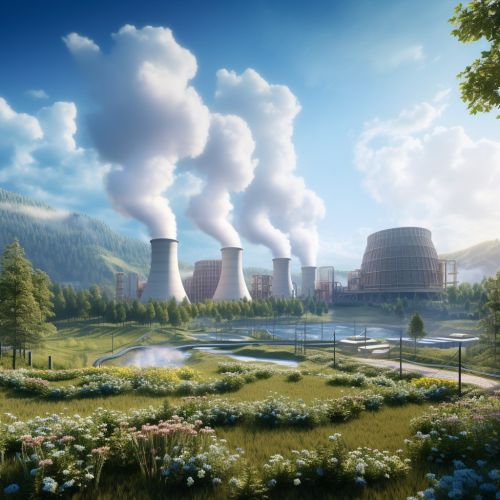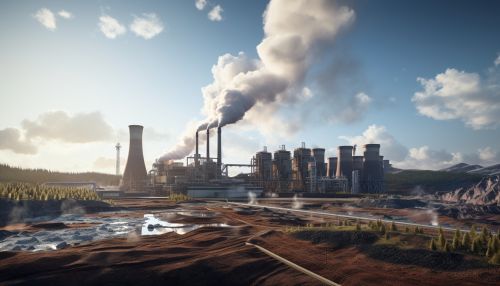Geothermal Energy Extraction
Introduction
Geothermal energy extraction is the process of harnessing the thermal energy stored in the earth's crust for use in power generation and heating. This form of renewable energy is considered environmentally friendly and sustainable, as it relies on the earth's natural heat, which is continuously replenished renewable energy.
Geology of Geothermal Energy
The earth's core, which is approximately 4,000 miles beneath the surface, reaches temperatures of over 9,000 degrees Fahrenheit. This heat is primarily generated from the decay of naturally radioactive minerals such as uranium and potassium. The heat from the core conducts to the surrounding mantle, a layer of molten rock known as magma. In certain areas, the magma rises closer to the earth's crust, heating the rocks and the water contained within those rocks. These areas of geothermal activity can be harnessed for energy production.
Methods of Geothermal Energy Extraction
There are three main methods of geothermal energy extraction: direct use, electricity generation in power plants, and geothermal heat pumps.
Direct Use
In direct use, hot water from the ground is used directly for heating buildings, growing plants in greenhouses, or other applications. The water is pumped from a well, then piped directly into a facility for immediate use. Once the heat energy is extracted from the water, it is returned to the ground through a separate well.
Electricity Generation in Power Plants
In geothermal power plants, heat from the earth is used to generate electricity. There are three types of geothermal power plants: dry steam, flash steam, and binary cycle.
Dry Steam Plants
Dry steam plants use steam from geothermal reservoirs to turn generator turbines. The first geothermal power plant, which was built in 1904 in Italy, was a dry steam plant.
Flash Steam Plants
Flash steam plants pull deep, high-pressure hot water into lower-pressure tanks and use the resulting flashed steam to drive turbines. They are the most common type of geothermal power plant.
Binary Cycle Plants
Binary cycle plants transfer the heat from geothermal hot water to another liquid. The second liquid—having a lower boiling point than water—turns into steam, which drives a turbine and generates electricity.
Geothermal Heat Pumps
Geothermal heat pumps use the constant temperature of the earth near the surface to heat and cool buildings. They transfer heat from the ground (or water) into buildings in winter and reverse the process in the summer.


Environmental Impact
While geothermal energy is a renewable resource, its extraction and use can have environmental impacts. These include the release of greenhouse gases, ground subsidence, and induced seismicity. However, the environmental impact of geothermal energy extraction is generally less than that of fossil fuel energy sources.
Economic Considerations
The economic viability of geothermal energy extraction depends on several factors, including the quality of the geothermal resource, the distance of the resource from the market, and the current cost of competing energy sources. Despite these challenges, geothermal energy has significant potential for future energy supply, particularly in regions with high geothermal activity.
Future of Geothermal Energy
As the demand for renewable energy sources increases, the potential for geothermal energy is being recognized. With advancements in technology and increased awareness of the environmental benefits, geothermal energy extraction is likely to play a significant role in the future energy mix.
